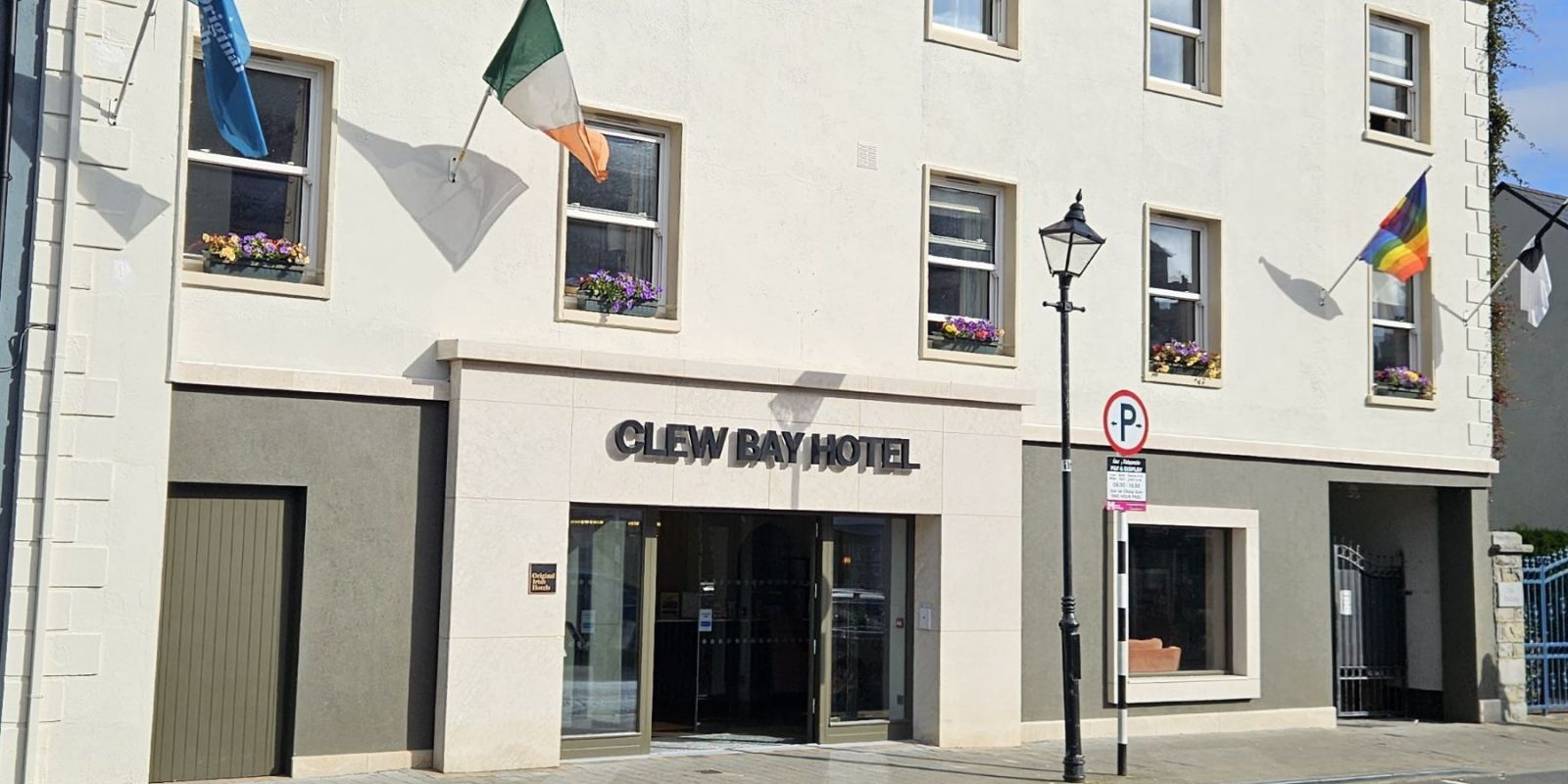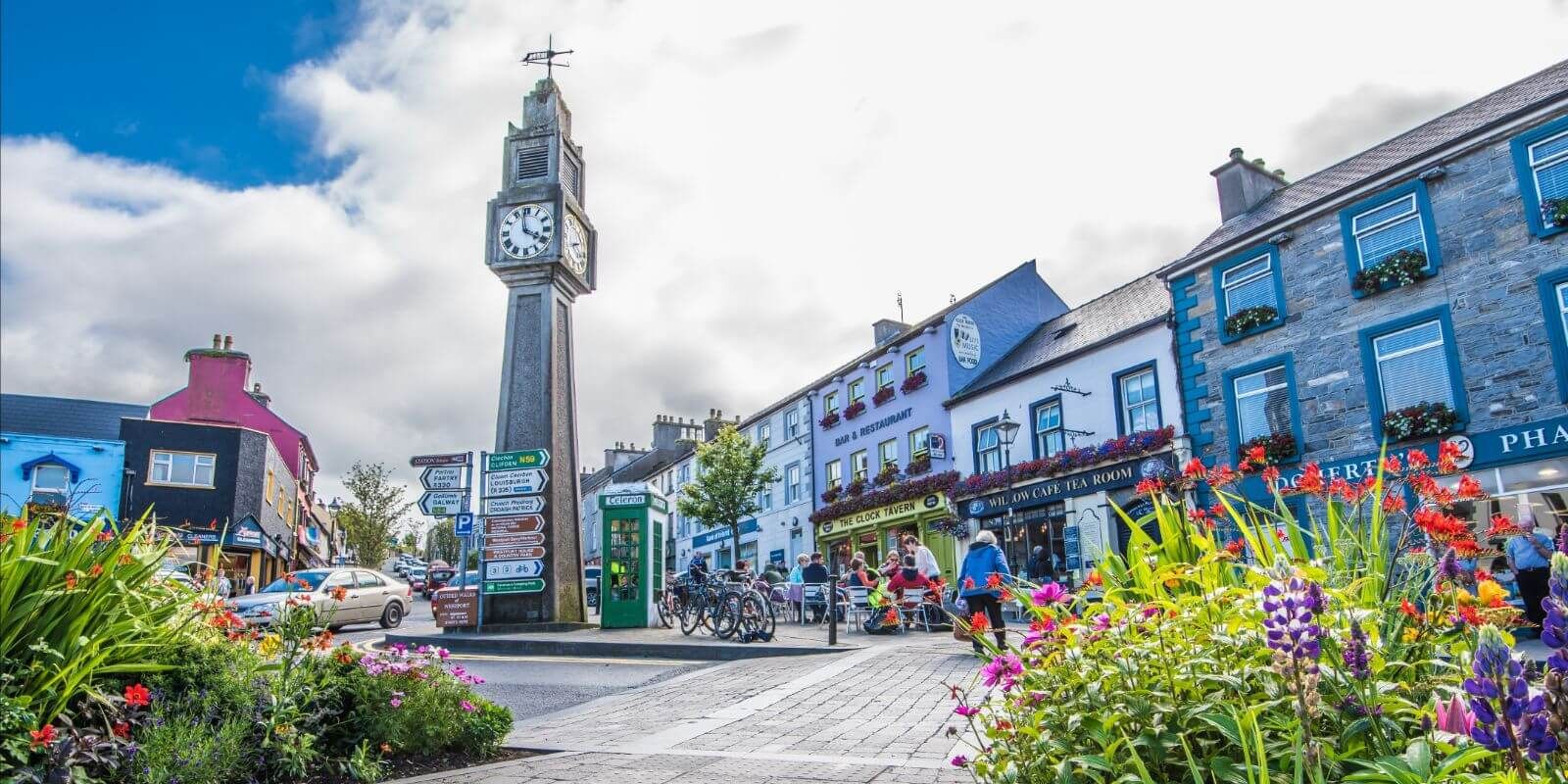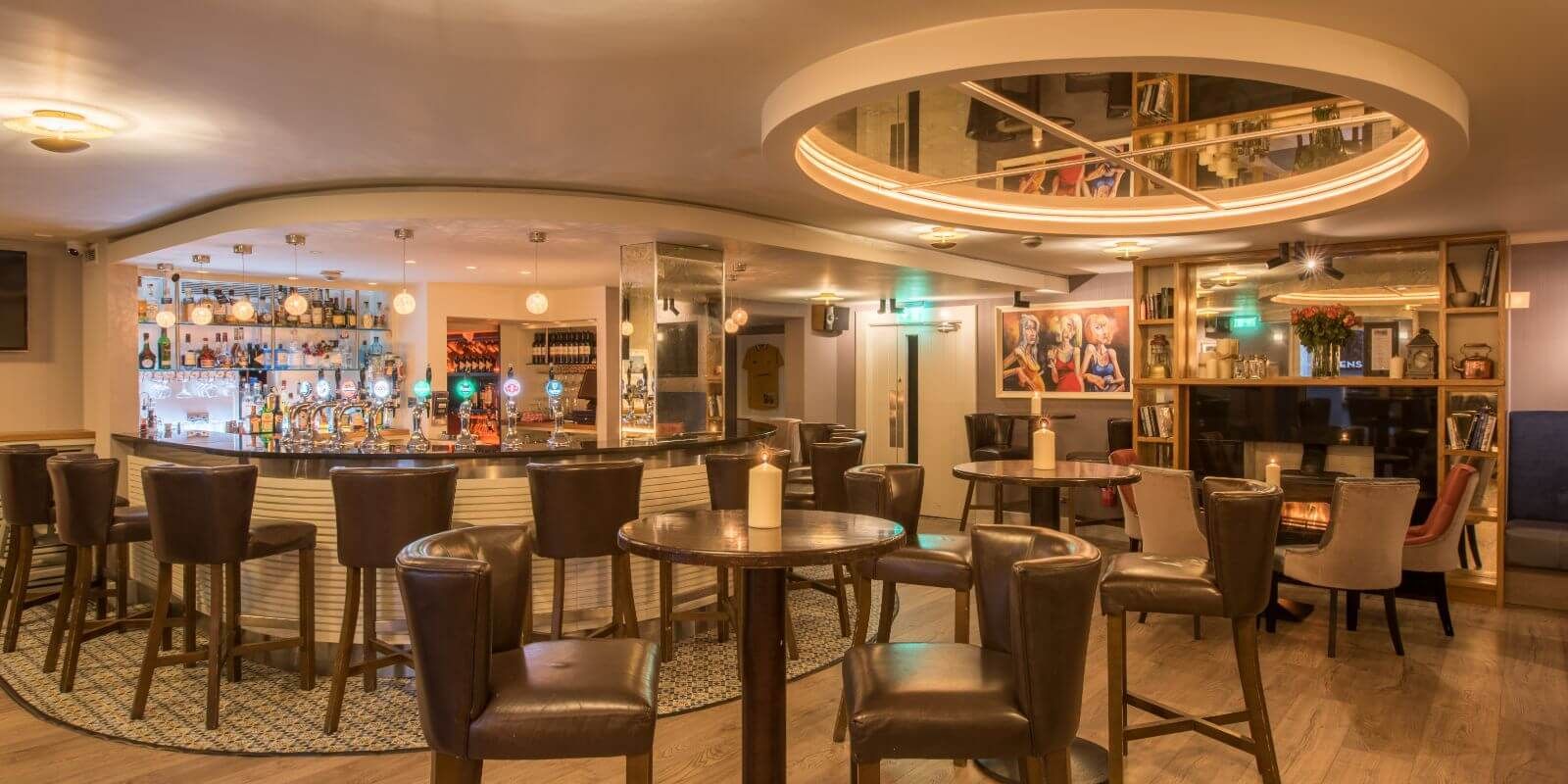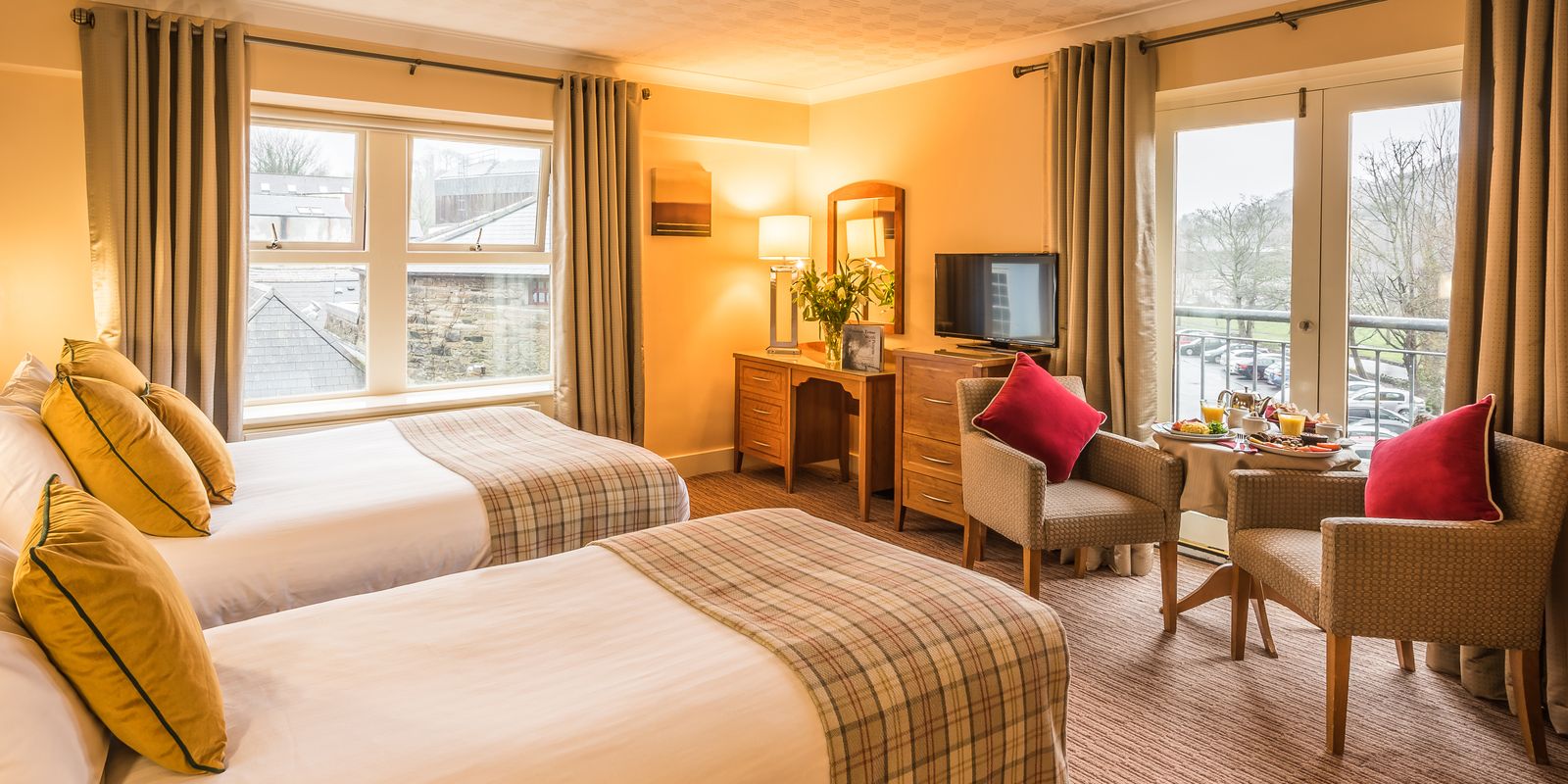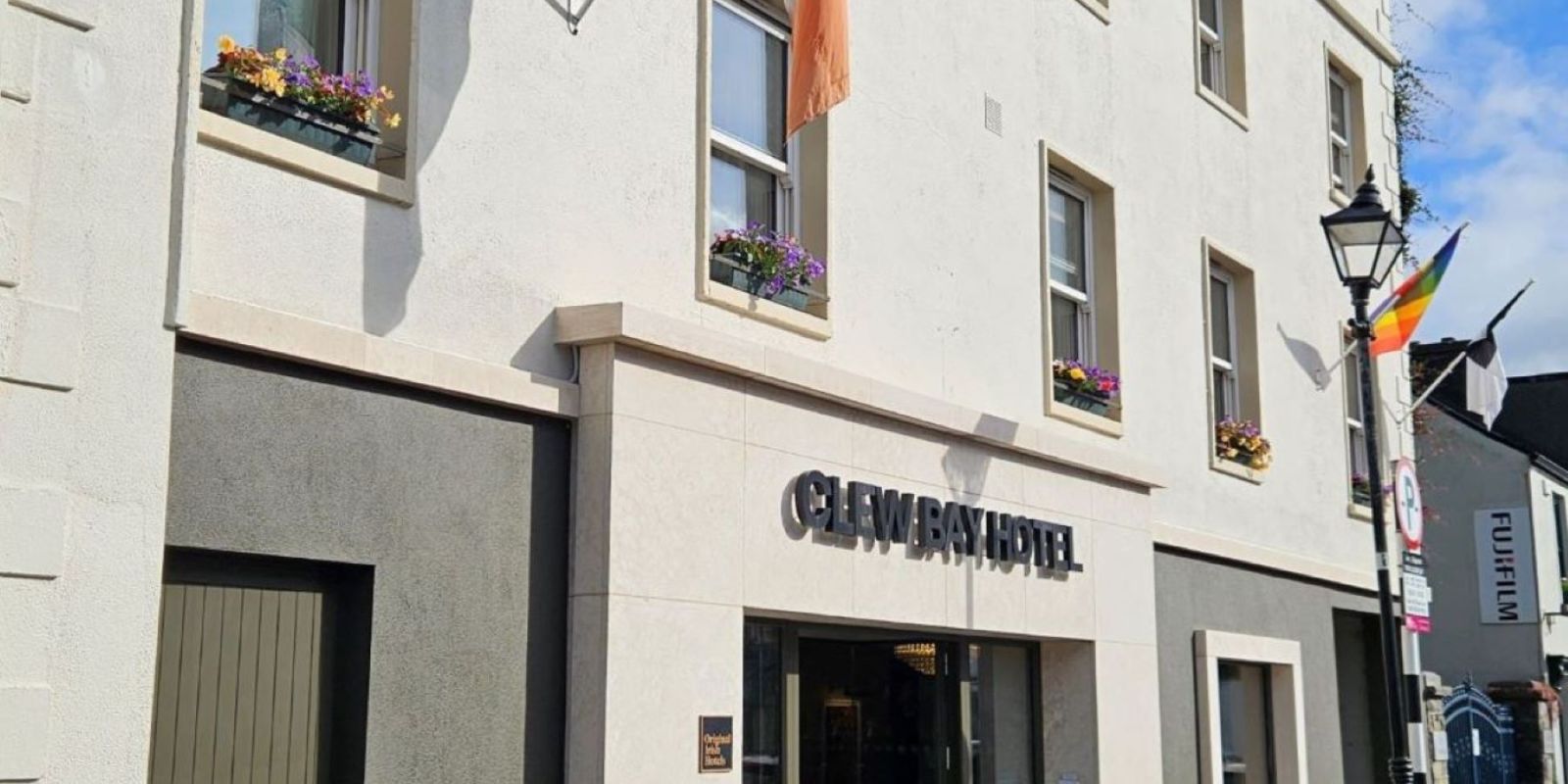The Church That Wouldn’t Die
Today we’ll visit the ancient Ballintubber Abbey and drive into central County Mayo to enjoy the area around Lough Cara and Lough Mask (lough, of course, means lake). We’ll head east out of Westport on the R330 toward Ballinrobe and cut across to the N84 (Galway Road) on the L1809. You’ll soon see signs directing you to the abbey.
Ballintubber Abbey was founded in 1216 by Cathal Crovderg O’Connor, the king of Connaught. Connaught is one of the four provinces of Ireland and encompasses the northwest quadrant of the island. Ballintubber is known as “the church that refused to die: because it’s one of the few Irish churches that have been in continuous use for almost 800 years. The forces of Oliver Cromwell, the brutal British military commander, took off the church’s roof in 1653 and attempted to suppress services, but the priests surreptitiously continued to hold mass in the damaged church. The Penal Laws, enacted later to outlaw the practice of the Roman Catholic religion, led to the elimination of churches throughout Ireland, but people still managed to worship at the abbey.
Ballintubber is the starting point for the Tóchar Phádraig - the “Walk of Patrick” - a pilgrimage of approximately twenty miles that culminates at the top of St. Patrick’s holy mountain, Croagh Patrick. On the way, one would walk past many humble and plain grave markers from the Great Famine of 1847. Originally this path was a chariot road that went from the ancient royal town of Rathcruachan in Co. Roscommon - seat of the kings and queens of Connaught - to Ballintubber and then through Aghagower to Croagh Patrick.
From the Abbey’s website: “The first effort at restoration of the Abbey church was made in 1846. It was then the intention to re-roof the nave as well as the transepts. The disastrous famine came in 1847 and the population of Ireland fell by millions and all work on the Abbey had to cease. Forty years later another generation resumed the task of restoration. Help and assistance came from many quarters, from people who had no connection whatsoever with the parish. Restoration of an Irish Abbey, then seven centuries old in which the praises of God had never ceased, even during the Penal days, captured the imagination of the public and tugged at the heartstrings of exiles all over the world, proud of their Irish heritage.
“We can still read letters from those of Irish blood in America, Australia and far-away New Zealand who had read of the work of restoration and hastened to help.
“In 1966, under the direction of Fr Tom Egan the nave of the Abbey was restored and roofed in time for the 750th anniversary of its foundation.”
One of the most unique elements at the abbey is the grave of Seán na Sagart – John of the priest.
Again, from the abbey’s website: “His name was John Malowney. Tradition says he became a priest hunter when he was caught stealing a horse. The penalty for this ‘crime’ was hanging. However, on the night before the hanging, Bingham, the Sheriff of Mayo, made a bargain with him – he would have his freedom provided he paid a certain rent each year – ‘a priest’s head.’” Be sure to read the full story on the website.
And Ballintubber has revived in style. Although the exterior is a sober and somber affair – covered in plain grey cement and stone, the interior is breathtaking - whitewashed walls, deep radiant window wells, colorful carved wooden stations of the cross, and an arched ceiling with dramatic timbers. Its beauty has attracted a number of celebrity weddings including James Bond. Well, Pierce Brosnan anyway…
In our next post, we’ll drink in the beauty of the nearby loughs.










